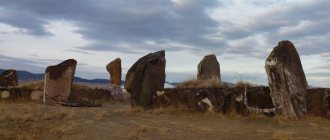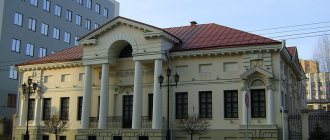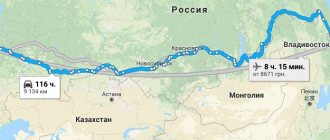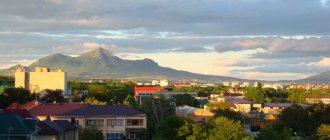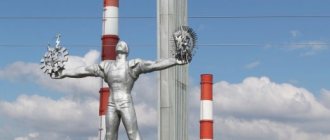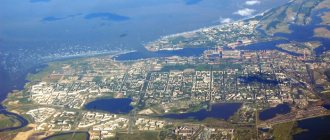The history of Birobidzhan is amazing. It took the station settlement of Tikhonkaya only two decades to become the capital of the Jewish Autonomous Region. This happened in 1934, and three years later, the workers' settlement received city status. Ethnic Jews not only from the republics of the USSR came to the JAO. Former citizens of Argentina, the USA, and Palestine became residents of the policy. Food and local industry enterprises, cultural and educational institutions appeared here. During the Second World War, 11 thousand citizens fought on the fronts. After the collapse of the Soviet Union, many Birobidzhan residents went to their historical homeland. However, even now the inscriptions on the signs of shops, public and government institutions are duplicated in Hebrew. The sights of Birobidzhan, photos of which are posted in the article, are worthy of the attention of travelers. Tourists visiting Russian Tel Aviv will not be bored.
Science and education
Among the scientific institutions of B. are the Institute for Comprehensive Analysis of Regional Problems of the Far Eastern Branch of the Russian Academy of Sciences, the Jewish Branch of the Institute of National Problems of Education of the Ministry of Education and Science of Russia (Moscow); branches of the Russian Philosophical Society, the Asian-Pacific Association of Teachers of Russian Language and Literature. Universities: Sholom Aleichem Priamur State University (1989; until 2005 - Birobidzhan State Pedagogical Institute, until 2011 - Far Eastern State Social and Humanitarian Academy; since 1990 it has included the Center for the Study of Yiddish Language and Culture), a branch of the Modern Humanitarian Academy (1997 ; Moscow city). Libraries: Regional Universal Scientific named after Sholom Aleichem (1934), Central City (1976); Center for Children's and Youth Books (1949), Technical (2003).
Monuments of Birobidzhan
Birobidzhan surprises travelers with a significant number of monuments, which is not typical for most provincial towns. Photos of monumental and sculptural landmarks will become excellent tourist trophies.
Sculptural composition “The First Migrants”
- Address: st. Kalinina. Transport stop "Railway Station".
The formation of autonomy in the Far East was the first successful attempt to create a Jewish state since the time of the ancient Jewish kings. Beginning in 1928, immigrants from the western, central regions of Russia and foreign countries began to arrive in the Amur region. Some of them had to travel a long, long way on a cart. The sculptural composition depicts just such a family of migrants. A man and a woman are sitting in a cart with simple belongings. The farmer's faithful assistant, the horse, takes them towards their dream of a happy life without oppression.
Monument to Sholom Aleichem
- Address: st. Shalom Aleichem. Transport stop "Arbat".
A classic of Jewish literature, all his life he dreamed that his fellow tribesmen would gain their own statehood. Sholom Aleichem did not live 12 years before the announcement of the creation of the Jewish Autonomous Region as part of the USSR. The city authorities thought about installing a monument to the writer and philosopher at the end of the last century, but the idea was realized only in 2004. The bronze statue is not particularly pompous. The sculptor depicted Sholom Aleichem as the writer was during his lifetime. It seems that the writer simply sat down in a chair for a while to make notes on the manuscript.
Art object "Friendship"
- Address: Friendship Square. Transport stop "Old Square".
With the collapse of the USSR and the beginning of Perestroika, relations between the Russian Federation and China improved significantly. Particularly close ties have been established between the northern provinces of the PRC and the southern regions of the Russian Far East. In the fall of 2002, the Chinese sister city of Hegang presented a gift to Birobidzhan. The sculptural composition is very symbolic. Two converging concrete steles represent the hands of a Chinese and a Russian, carefully supporting the Earth. The composition is complemented by plaster sculptures of pandas, seals and penguins, located near the monument.
Monument "Cranes"
- Address: Bira embankment. Transport stop "Rainbow".
The capital of the autonomy prepared carefully for the celebration of the 75th anniversary of the formation of the Jewish Autonomous Region. Then the architectural monuments were brought into proper condition, and the embankment of the Bira River was reconstructed. One of her decorations was the elegant sculptural composition “Cranes”. A pair of birds, spreading their wings and arching their necks, looks incredibly graceful. Newlyweds come to the monument immediately after marriage. Fortunately, the registry office is very close. Tourists willingly take photographs near the colorful sculptural composition.
Economy
The basis of the city economy is the service sector; its leading sectors are: administrative, financial, transport and logistics services, trade, science, education and healthcare. B. accounts for about 80% of the retail trade turnover of the Jewish Autonomous Region (4.4 billion rubles, 2013). The leading branches of the manufacturing industry are light and food processing. Among the enterprises of light industry are the following factories: “Victoria” (production of hosiery and other knitted products, bed linen), “Diamant” (knitted products), sewing “Elegant”, shoe factory “Rostok”, felted shoes; sewing association "Nadezhda". Leading enterprises of the food-flavoring industry: meat processing plant, dairy plant, confectionery and pasta factories, distillery, enterprises (processing of soybeans; production of soybean oil and cake) and the “Fish Company” (fish processing; canned fish, salted and smoked fish); a large number of small bakeries. There are several enterprises in other industries - mechanical engineering and metalworking (factories of power transformers and light metal structures "Chance"), forestry [woodworking plant, furniture plant "FOMA" (FOMA), furniture factories "Dalmebel" and Birobidzhan, cardboard factory ( production of corrugated cardboard packaging)] and building materials [factories: lime, sand-lime bricks, reinforced concrete products (products made of concrete, gypsum and cement), as well as the production site of "GK Stroyindustriya"]. Energy supply is provided by the Birobidzhan Thermal Power Plant (1958; installed capacity 360 MW; uses coal as fuel).
To the north of B. is the Bastak state reserve (1997), 135 km to the northwest is a resort with mineral springs in the village of Kuldur.
Content
- 1 History 1.1 Factors underlying the Birobidzhan experiment
- 1.2 Complications during the experiment
- 1.3 Notable supporters of Birobidzhan
- 6.1 Climate
- 10.1 Notes
further reading
- S. Almazov, 10 years old Biro-Bidzhan.
New York: ICOR, 1938. - Henry Frankel, Jews in the Soviet Union and Birobidzhan.
New York: American Birobidzhan Committee, 1946. - Gessen, Masha (2016). Where there are no Jews: the sad and absurd story of Birobidzhan, Jewish Autonomous Region of Russia (series of meetings with Jews)
. Schocken Books. ISBN 978-0805242461. - Nora Levin, Jews in the Soviet Union Since 1917: The Paradox of Survival: Volume 1.
New York: New York University Press, 1988. - James N. Rosenberg, How the Back to Soil Movement Began: Two Years of Laying a New Jewish "Covered Wagon" Crossing the Russian Prairies.
Philadelphia: United Jewish Campaign, 1925 - Jeffrey Shandler, “Imagining Yiddishland: Language, Place, and Memory,” History and Memory
vol. 15, no. 1 (Spring/Summer 2003), pp. 123–149. In JSTOR - Henry Felix Srebrnik, Dreams of State: American Jewish Communists and the Soviet Birobidzhan Project, 1924–1951.
Boston: Academic Studies Press, 2010. - Robert Weinberg, "The Purge and Politics on the Periphery: Birobidzhan in 1937." Slavic Review,
vol. 52, no. 1 (Spring 1993), pp. 13–27. In JSTOR - Robert Weinberg, Stalin's Forgotten Zion: Birobidzhan and the Making of the Soviet Jewish Homeland: An Illustrated History, 1928–1996.
Berkeley, CA: University of California Press, 1998. - Srebrnik, Henry Felix (2010). Dreams of a State: American Jewish Communists and the Soviet Birobidzhan Project, 1924-1951.
. Boston: Academic Studies Press. Doi:10.2307/j.ctt1zxsj1m. ISBN 9781618116871. JSTOR j.ctt1zxsj1m.
[edit] Zugunders
End of the 17th
- instead of telling you to fuck off in a humane and cultural manner, you will be asked to take bus route 17, which goes exactly to the local mental hospital.
| [ + ] Birobidzhan is part of the harsh reality of this country. | |||||||||||||||||
| |||||||||||||||||
| [✡ ] | |||||||||||||||||
| |||||||||||||||||
Blagoveshchensky cathedral
A relatively young cathedral, construction of which began in 2003. Construction was completed in 2005. Today, the temple is notable for its unusual architecture, which attracts a large number of tourists.
For believers, the cathedral occupies a special place due to the fact that the only porcelain iconostasis in the Far Eastern District is located in the lower church. Prayers are held here regularly in honor of Orthodox holidays.
Location: Lenin street - 34.
[ads]
Location
According to many historians, Stalin's attempt to resettle the Jewish population from the central region of the country was nothing more than a voluntary exile. After all, the entire territory where Birobidzhan is located, as well as the lands adjacent to it, were practically wild places. Although this part of the Far East, despite the harsh climate and constant monsoon winds, turned out to be quite suitable for life.
Favorable conditions here were made possible due to the favorable relief; the territory is surrounded by a massive mountainous region with the highest point on Mount Studencheskaya (1412 m), and in the south and east lies the Middle Amur Lowland. The largest river in the region is the Amur; freight and passenger transportation takes place here for seven months of the year. The city itself is located on the banks of one of the small rivers, the Bira, a little further - Bidzhan, they flow parallel to each other and flow into the great Siberian river.
Monument with the IS-3 tank
A monument with a combat vehicle appeared in Birobidzhan on the 63rd anniversary of the Great Victory. This theme for the monument was not chosen by chance, because in 1941 the 60th Tank Brigade was organized in Birobidzhan.
Of course, the tank, mounted on a pedestal, did not take part in the battles, because came off the assembly line only in 1944, but this in no way diminishes the significance of the memorial dedicated to all tank crews who died at the front.
Location: Bumagin Square.
Sholom Aleichem Library
It is the largest in Birobidzhan. She was named after the most famous Jewish literary figure, who wrote in three languages, including Russian. This library has a very significant book collection; it is believed that it is possible to find almost any literature here. The library is located in a small building designed by the architect Kobzar.
Location: Lenin street - 25.
Story
Birobidzhan was planned by Swiss architect Hannes Meyer, founded in 1931. administrative center of the Jewish Autonomous Region in 1934, and received city status in 1937.[2] 36,000 km2 of Birobidzhan was approved by the Politburo on March 28, 1928.[17] After the Bolshevik Revolution in the Soviet Union, there were two organizations that worked with Jews who settled in Birobidzhan - KOMZET and OZET.[18] The organizations were responsible for land distribution as well as household duties ranging from relocation to medical care. Many Jewish Canadians then supported the Soviet Union, becoming members or sympathizers of the Communist Party of Canada.[18] Jewish communists considered the creation of Birobidzhan by the Soviet Union "the only true and reasonable solution to the national question."[18] The Soviet government used the slogan “To the Jewish Homeland!” encourage Jewish workers to move to Birobidzhan. This slogan proved successful in convincing Soviet Jews, as well as Jews from other countries.[19] In 1935, Ambidzhan received permission from the Soviet government to help Jewish families coming to Birobidzhan from Poland, Romania, Lithuania and Germany.[20] Jewish workers and engineers came to Birobidzhan from Argentina and the USA.[19] This campaign by the Soviet government was known as the Birobidzhan experiment.[21]
Factors underlying the Birobidzhan experiment
Although Birobidzhan was intended to serve as a home for the Jewish population, the idea struggled to become a reality. There were no important cultural connections between this land and the Jewish settlers. The growing population was culturally diverse: some settlers were focused on being modern Russian citizens, some were disillusioned with modern culture with a desire to work the land and promote socialist ideals, and few were interested in creating a cultural homeland. Hidden motives generated by the Soviet government were the main reasons for the resettlement of Jews to Birobidzhan. They were strategically relocated from their home regions of Ukraine, Belarus, and Crimea because Jewish settlement in these regions encountered strong resistance from the majority of the population. The placement of Jews in Birobidzhan was supposed to serve as a buffer against any Chinese or Japanese expansion. The region was also a link between the Trans-Siberian Railway and the Amur River Valley, and the Soviet government sought to exploit the region's natural resources, such as fish, timber, iron, tin and gold.[21]
Complications during the experiment
Before the Russian Revolution of 1917, Jewish residence was limited to the Pale of Settlement. When Jews moved to Birobidzhan, they had to compete with the approximately 27,000 Russians, Cossacks, Koreans and Ukrainians already living there for property and land on which to build new homes. This made the transition of the Jewish population difficult, since there was no significant territory to call their own.[21]
From a logistical and practical point of view, settling Birobidzhan proved to be a difficult task. Due to inadequate infrastructure and weather conditions, more than half of the Jewish settlers who moved to Birobidzhan after the initial settlement did not remain in the area.[22]
When Stalin's purges began, shortly after the creation of Birobidzhan, Jews became victims.[23] After World War II, tens of thousands of displaced Eastern European Jews moved to Birobidzhan from 1946 to 1948.[24] Some of them were Ukrainian and Belarusian Jews who were not allowed to return to their former homes.[23] However, Jews became targets again after World War II, when Joseph Stalin launched a campaign against "rootless cosmopolitans".[23] Almost all Yiddish institutions in Birobidzhan were liquidated.[25]
Notable supporters of Birobidzhan
Among Birobidzhan's supporters was Dudley Aman, first Baron Marley. After Lord Marley met with Peter Smidowicz and Jacob Tsegelnicki in August 1932, Marley became a supporter of Birobidzhan as a new homeland for Jewish workers and refugees. His visit to Birobidzhan in October 1933 was organized by Smidovich himself. Marley's assessment of the area was positive, and he became a more vocal supporter of the Birobidzhan settlement.[19]
Yiddish writer David Bergelson played a large role in promoting Birobidzhan, although he himself did not actually live there.[23] Bergelson wrote articles in Yiddish newspapers in other countries, extolling the region as an ideal escape from anti-Semitism in other countries. At least 1,000 families from the United States and Latin America came to Birobidzhan because of Bergelson. On his 68th birthday in 1952, Bergelson was among those executed during Stalin's campaign against the Jews.[23]
New Motherland is played in Russian
(
Novaya Rodina
) Soviet playwright Viktor Fink glorified Birobidzhan as a union of three communities - Koreans, Amur Cossacks and Jews.[26] Every community has its good and bad characters, but eventually the good characters from each community learn to cooperate and work with each other.[27] To symbolize the unity achieved, the play ends with mixed marriages: one Jewish character marries a Korean, another Jewish character marries a Cossack, and a Cossack marries a Korean.[28] Similarly, the Soviet Yiddish writer Emmanuel Kazakevich depicted in a poem the achievement of Birobidzhan, declared a Jewish Autonomous Region on May 7, 1934, as an intercommunal event attended by members of the Amur Cossack Army who came out to celebrate.[29] Kazkevich's poem had a basis in reality—many members of the Amur Cossack Army hoped that Birobidzhan signaled Soviet interest in the abandoned region on the banks of the Amur River.[30]
Canadian Arctic explorer Vilhjalmur Stefansson was vice-president of the Ambijan, or American Committee for the Resettlement of Jews in Birobidzhan,
which was an additional group that was merged with ICOR in 1946. His support for Birobidzhan as a new homeland for Jewish families included appearing at meetings in support of Jewish resettlement in Birobidzhan, as well as advocating for families who actually wanted to travel rather than those who were best suited for the journey. .[20]
City Palace of Culture
City Palace of Culture in Birobidzhan, 1960s. and modernity. Photo: EAOMedia news agency
The Palace of Culture, which became the decoration of the regional center, opened in 1963. Based on the order of the regional department of culture dated July 12, 1963, the director of the Palace of Culture, Bela Petrovna Mazo, was instructed to begin its operation and organize the work of amateur art groups, folk theaters, and a pop orchestra. Russian and Jewish folk theaters operated at the Palace of Culture.
Palace of Culture in Birobidzhan, 1960s. Photo: State Archive of the Jewish Autonomous Region
“The residents of Birobidzhan in the 60s, having taken possession of one of the most beautiful buildings in the city, were happy in their own way. The opening day of the Palace of Culture, which they have been waiting for so long, has arrived! The directions of the Palace’s activities, the number and names of circles were determined in advance, and the main leadership team was selected. The opening celebration of the Palace of Culture was solemn and joyful. Still would! Such magnificence! 12 rooms for group work, a functioning stationary film installation, six pianos, 18 button accordions and accordions, a set of wind instruments for a brass band, a set for an orchestra of folk instruments, two tape recorders, a film camera and two cameras,” says the historical reference of the State House of Culture on the City Council website Duma of Birobidzhan.
Today, creative groups work in the Palace of Culture: the circus studio “Happy Childhood”, the folk violin ensemble, ballroom and sports dance ensembles, pop dance ensembles, the folk ensemble “Mladushka”, the folk Jewish music and drama theater “Kohelet” and others.
Palace of Culture in Birobidzhan, our days. Photo: https://www.biradm.ru/
Dendrological park
In fact, the park is one hundred and ten square meters of forested area. At the same time, landscaping and expansion work is carried out regularly. The vegetation of the park is represented mainly by not very exclusive shrubs, coniferous and deciduous trees. Every year new seedlings of cedars, spruce, fir, etc. are added to them.
Location: Birobidzhan highway.
Geography
Birobidzhan (1950)
Climate
Birobidzhan is experiencing a harsh rainy season. humid continental climate (Köppen climate classification Dwb
), which is characterized by very large seasonal temperature variations, with warm to hot (and often wet) summers and very cold (and dry) winters.[50]
| Climate data for Birobidzhan | |||||||||||||
| Month | Jan | Feb | Mar | Apr | May | Jun | Jul | Aug | Sep | October | But I | December | Year |
| Record high °C (°F) | −0.4 (31.3) | 5.9 (42.6) | 18.4 (65.1) | 29.8 (85.6) | 33.7 (92.7) | 37.1 (98.8) | 39.9 (103.8) | 36.8 (98.2) | 32.7 (90.9) | 26.9 (80.4) | 16.1 (61.0) | 5.2 (41.4) | 39.9 (103.8) |
| Average high °C (°F) | −15.6 (3.9) | −10.9 (12.4) | 0.2 (32.4) | 9.5 (49.1) | 18.2 (64.8) | 24.5 (76.1) | 26.8 (80.2) | 24.3 (75.7) | 18.1 (64.6) | 8.5 (47.3) | −4.1 (24.6) | −14.2 (6.4) | 7.0 (44.6) |
| Daily average °C (°F) | −22.2 (−8.0) | −16.5 (2.3) | −6.4 (20.5) | 5.4 (41.7) | 13.0 (55.4) | 18.9 (66.0) | 21.1 (70.0) | 19.2 (66.6) | 12.8 (55.0) | 3.9 (39.0) | −9.2 (15.4) | −18.8 (−1.8) | 1.9 (35.4) |
| Average low °C (°F) | −27.4 (−17.3) | −26.4 (−15.5) | −16.5 (2.3) | −3.4 (25.9) | 5.0 (41.0) | 12.5 (54.5) | 15.1 (59.2) | 13.4 (56.1) | 5.9 (42.6) | −1.3 (29.7) | −16.9 (1.6) | −26.6 (−15.9) | −3.6 (25.5) |
| Record low °C (°F) | −43.7 (−46.7) | −39.9 (−39.8) | −34.1 (−29.4) | −19.7 (−3.5) | −3.9 (25.0) | 1.5 (34.7) | 5.9 (42.6) | 3.7 (38.7) | −3.9 (25.0) | −19.8 (−3.6) | −33.6 (−28.5) | −37.9 (−36.2) | −43.7 (−46.7) |
| Average precipitation mm (inches) | 6 (0.2) | 5 (0.2) | 13 (0.5) | 35 (1.4) | 61 (2.4) | 108 (4.3) | 147 (5.8) | 154 (6.1) | 88 (3.5) | 35 (1.4) | 19 (0.7) | 11 (0.4) | 682 (26.9) |
| Average number of days with precipitation | 2 | 2 | 4 | 6 | 10 | 12 | 13 | 13 | 10 | 5 | 4 | 3 | 84 |
| Source 1: World Meteorological Organization (UN) [51] | |||||||||||||
| Source 2: [www.retscreen.net/ru/home.php NASA RETScreen Database] | |||||||||||||
